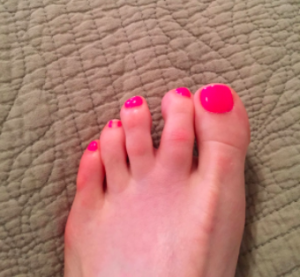- Protecting the heads of the long toe bones in the foot (metatarsals) from hyperextending
- Absorbing impact forces from heavy loads
- Stabilising the joints at the ball of the foot and keep in alignment and from separating from the other toes
- Assist other tissues in their functions, such as the plantar fascia
What causes a plantar plate tear?
 Plantar plate tears are usually a result of overloading the ball of the foot. As the second metatarsal is often the longest, it is usually affected. Contributing factors can include:
Plantar plate tears are usually a result of overloading the ball of the foot. As the second metatarsal is often the longest, it is usually affected. Contributing factors can include:
- Pronation (rolling in) of the feet
- Bunion and hammertoe deformities
- Short first metatarsal bone or long second metatarsal bone
- Repetitive high-impact activities such as running
- Climbing stairs or similar activities that put excess pressure on the ball of the foot
What are the symptoms?
While plantar plate tears are one of the most common causes of pain at the second toe joint, they can affect any of the toes. Symptoms can include:- Pain and tenderness in the area of the tear at the ball of the foot
- Swelling at the bottom and/or top of the foot
- ‘V’ sign where the toes in the affected region have separated, resulting in a ‘V’ shape between the toes
- The feeling of walking directly on the bone
- Pain is aggravated by bending the toes upwards
How is it treated?
Treatment initially focuses on managing the painful symptoms. This can be achieved with rest, ice and the use of anti-inflammatories where are appropriate. Treatment then focuses on facilitating the repair of the plantar plate and addressing the cause. This may include:- Strapping the toes
- Padding to temporarily alleviate pressure from the affected toes
- Orthotics to correct any biomechanical or alignment issues that may have contributed to the injury, as well as off-loading the painful structures
- Footwear assessment to ensure the shoes are helping and not hindering recovery
- Managing associated conditions such as bunion and toe deformities








